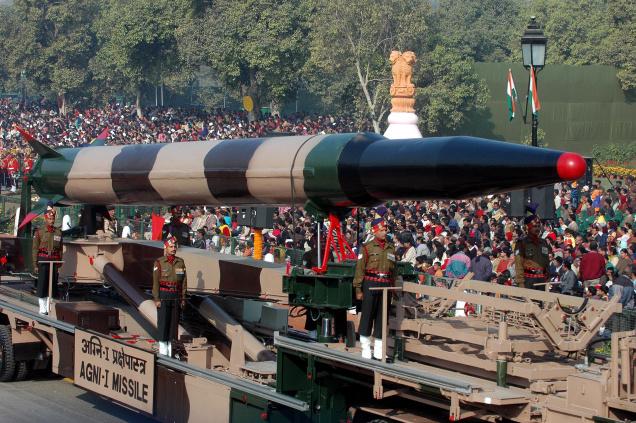
Balasore (Odisha), July 13: India on Friday successfully test-fired its indigenously developed nuclear capable Agni-I ballistic missile, with a strike range of 700 km, as part of the Army’s user trials from a test range at Wheeler Island off Odisha.
The surface-to-surface, single-stage missile, powered by solid propellants, was test-fired from a mobile launcher at 10.10 a.m. from launch pad-4 of the Integrated Test Range at Wheeler Island, about 100 km from Balasore, defence sources said.
“The trial of the sophisticated missile with a strike range of 700 km was successful,” a defence scientist said.
Describing the launch as a routine user’s trial by the strategic force command of Indian Army, he said the main objective was to train the user team to launch the missile.
“It was a practice-drill. The user-team picked a missile at random from the production lot and fired it with logistic support provided by Defence Research Development Organisation (DRDO) at ITR,” he said.
Agni-I missile has a specialised navigation system which ensures it reaches the target with a high degree of accuracy and precision, he said.
The trajectory of the missile, which has an operational strike range of 700 km, was tracked by sophisticated radars and electro-optic telemetry stations located along the sea coast and ships positioned near the impact point in the downrange area.
Weighing 12 tonnes, the 15-metre-long Agni-I, which can carry payloads up to 1000 kg, has already been inducted into the Indian Army.
Agni-I was developed by advanced systems laboratory, the premier missile development laboratory of the DRDO in collaboration with Defence Research Development Laboratory and Research Centre Imarat and integrated by Bharat Dynamics Limited, Hyderabad.
The last trial of the Agni-I missile was successfully carried out on December 1, 2011 from the same base.
Since the missile has already been inducted into the armed forces, it is important to conduct user trials for training of defence personnel and improvement of their skills, sources said.






Comments
Add new comment